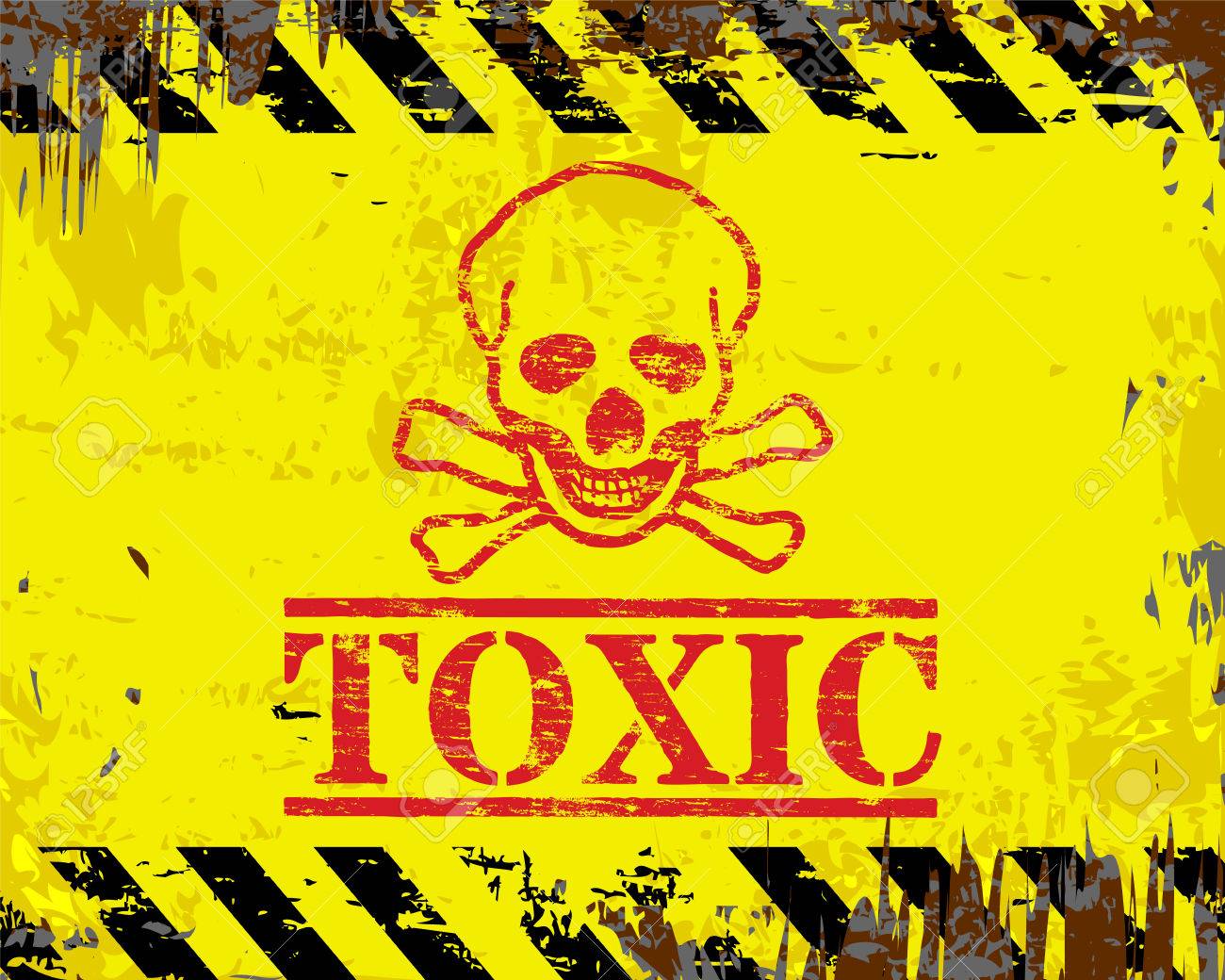 (Beyond Pesticides, August 28, 2020) The Environmental Protection Agency (EPA) has granted âemergencyâ permission to the State of Texas to allow the use of SurfaceWiseÂź2, an unregistered pesticide, as an anti-viral surface coating. The manufacturer, Allied Bioscience, says the compound can kill coronaviruses (including SARS-CoV-2) starting at two hours post application and for up to seven days, but it is not included on EPA’s List N, of disinfectants effective against SARS-CoV-2. EPA has permitted this use via the authority of Section 18 of the Federal Insecticide, Fungicide, and Rodenticide Act (FIFRA), which allows for âemergencyâ use of non-registered pesticides, typically to deal with extreme threats to agricultural activities. It is rarely used for public health emergencies. Beyond Pesticides recognizes the need for protection from transmission of the novel coronavirus, and maintains that it ought to and can be done without exposing people to toxic synthetic pesticides that have not undergone evaluation for safety. See Beyond Pesticidesâ guidance on effective and safe precautions against the novel coronavirus.
(Beyond Pesticides, August 28, 2020) The Environmental Protection Agency (EPA) has granted âemergencyâ permission to the State of Texas to allow the use of SurfaceWiseÂź2, an unregistered pesticide, as an anti-viral surface coating. The manufacturer, Allied Bioscience, says the compound can kill coronaviruses (including SARS-CoV-2) starting at two hours post application and for up to seven days, but it is not included on EPA’s List N, of disinfectants effective against SARS-CoV-2. EPA has permitted this use via the authority of Section 18 of the Federal Insecticide, Fungicide, and Rodenticide Act (FIFRA), which allows for âemergencyâ use of non-registered pesticides, typically to deal with extreme threats to agricultural activities. It is rarely used for public health emergencies. Beyond Pesticides recognizes the need for protection from transmission of the novel coronavirus, and maintains that it ought to and can be done without exposing people to toxic synthetic pesticides that have not undergone evaluation for safety. See Beyond Pesticidesâ guidance on effective and safe precautions against the novel coronavirus.
The Texas Department of Agriculture secured the EPA exemption, making the state the first to do so; Allied BioScience is pursuing this emergency waiver across all 50 states. The exemption grants American Airlines and two health care facilities in the state the ability to use the unregistered pesticide, which is applied by electrostatic spraying. Usually, a Section 18 exemption would be made absent other viable alternatives to address the problem and when there are at least minimal health and environmental safety data available for the compound; neither is the case for SurfaceWiseÂź2.
This one-year use allowance of the product would appear to be a specific exemption more than a response to a public health âemergency.â From the EPA website: âSection 18 of the Federal Insecticide, Fungicide and Rodenticide Act (FIFRA) authorizes EPA to exempt state and federal agencies from certain provisions of FIFRA and allow unregistered uses of pesticides to address emergency conditions. Under such an exemption, EPA allows limited use of a pesticide in defined geographic areas for a finite time, once EPA confirms that the situation meets that statutory definition of âemergency condition.â Section 18 emergency exemptions must be requested by a state or federal agency. Section 18 emergency exemptions are routinely granted for use in agricultural settings involving invasive pest outbreaks, though rarely for public health emergencies.â
EPAâs news release on the exemption says: âSurfaceWise2 is meant to inactivate viruses that land on a surface between regular cleanings. This product is not a replacement for routine cleaning and disinfection with products from EPAâs List N.â In the COVID-19 pandemic, EPA has created its âList Nâ â disinfectants that meet agency criteria for efficacy against SARS-CoV-2 (the virus that causes COVID-19) and other coronavirus illnesses, but which are not necessarily evaluated for safety. There are hundreds of compounds listed on List N, which begs the question: what is the âemergency needâ for SurfaceWiseÂź2?
Allied BioScience touts the compound as ânon-toxic, non-irritating, odorless and contain[ing] no chemicals that produce harmful vapors or gases.â Yet, on EPAâs List N are a legion of products with active ingredients known as quaternary ammonium compounds or âquats,â about which there are toxicity concerns. In fact, roughly half of the List N products contain a quat as the single active ingredient. An active ingredient in SurfaceWiseÂź2 is a quaternary ammonium.
Quats are organic, ionic chemical agents with properties of both surfactants and disinfectants; they have been used in disinfectant products for many years. However, especially over the course of the past decade or so, quats have been linked to a range of human health harms, including increased risks of asthma and allergic response; mutagenicity (e.g., some quats have been shown to damage DNA in human lymphocytes at much lower levels than are present in cleaning chemicals); contact dermatitis and other skin irritation; lowered fertility; and potential and significant disruption of key cellular processes (see more below). The National Institutes of Health designates quaternary ammonium as âasthma-causing and irritable to eyes and skin, flammable and corrosive, harmful to aquatic ecosystems, and persistent in the environment.â
There are also concerns about some quatsâ ability to catalyze antibiotic resistance, and impacts on the human respiratory system â of particular concern in the era of COVID-19, which in many people damages lung tissue and compromises oxygen delivery to the bodyâs cells. The use of quats, which have been on the market since the early 20th century (before EPA began regulating potentially harmful chemicals) should be less facile â particularly during a massive public health pandemic.
University of California, Davis toxicologist Gino Cortopassi, PhD has studied causes of mitochondrial dysfunction for the past decade. Mitochondria are the âpower plantsâ of cells, transforming food into the chemical energy needed for cellular biochemical processes â cellular respiration, or use of oxygen delivered by circulation, being a primary one. Cells use ATP (adenosine triphosphate) to store the energy that mitochondria produce. Dr. Cortopassiâs research has found that quats compromise both mitochondrial consumption of oxygen and the creation and storage of ATP. This finding should be a red alert for the use of quat compounds during the COVID-19 pandemic.
As Beyond Pesticides wrote in August 2020, âIndividuals and government officials, alike, should observe all chemical ingredients on the disinfectant and sanitizer product labels and look at the use instructions to ensure that the method of use is safe. . . . Additionally, the U.S. Environmental Protection Agency (EPA) registers disinfectants as pesticides designed for use on hard surfaces, but not bare skin like sanitizers. It is essential that when EPA weighs risks and benefits of pesticide use, it does not allow harm to those disproportionally impacted by these chemicals like farm/landscape workers and people of color, who may suffer elevated exposure to the virus as essential workers. An evaluation of the contribution of pesticide use and exposure to health outcomes of COVID-19 is urgently needed.â For the facts on meeting health protection needs for disinfection, see Beyond Pesticidesâ webpage on Disinfectants and Sanitizers.
Another, earlier iteration of this product, SurfaceWise, is registered as an anti-microbial surface coating, but SurfaceWiseÂź2 is not currently on List N and has not been evaluated by EPA. The manufacturer has not submitted the necessary data to qualify for registration under FIFRA, but EPA notes: âOver the coming months, Allied BioScience will pursue a non-emergency approval under FIFRA Section 3 by submitting additional data to meet EPAâs registration requirements as an antiviral surface coating. If the full registration process is completed, the product would become available for purchase by members of the public.â This would potentially open the door to people using SurfaceWiseÂź2 in their homes, subjecting themselves and their families to chronic and repeated exposures to a product that could make them more vulnerable were they to contract the novel coronavirus.
EPAâs August 24 news release goes on, essentially, to invite more entities to apply for âemergency useâ exemptions under Section 18. The news release mentions efficacy, but nowhere is there a word about safety: âEPA anticipates posting information for companies or individuals who are interested in pursuing a FIFRA Section 3 registration for antiviral surface coatings in the coming weeks. In the interim, states or federal agencies interested in pursuing a Section 18 Emergency Exemption Request for products that claim residual efficacy against viruses for up to seven days should be prepared to include efficacy data demonstrating that the product is durable and effective against viruses in their applications. Durability and efficacy should both be evaluated. For example, antiviral efficacy should be assessed using coated surfaces that have been exposed to physical touches/abrasion and treatment with disinfectants. EPA will review the results of these studies to ensure that surface coatings remain effective under the anticipated proposed conditions of use.â
As the public and many, many businesses struggle to find ways to resume economic and other kinds of ânormalâ activities, there have been pushes both to resume potentially risky activities and to make some of those activities safer â or at least to make them seem safer. American Airlinesâ wish to deploy SurfaceWiseÂź2 on its cabin surfaces can be seen as both. Airlines are facing economic hits from generally reduced air travel during the pandemic, and backlash due to images of airlines packing planes full. Many potential travelers, concerned about transmission of the novel coronavirus during flights, have opted not to fly. Yes, SurfaceWiseÂź2 kills the virus. But this âemergencyâ exemption appears to some extent to be a solution in search of a problem.
In the initial stages of the pandemic, there was much concern about transmission via âfomitesâ â materials or objects that can transmit infection. Since then, nearly all of the emerging science has indicated that surfaces are very rarely responsible for transmission of the virus. The novel coronavirus is far more commonly transmitted via close personal contact when an infected person coughs, breathes, or speaks, according to the Centers for Disease Control and Prevention (CDC), than via contaminated surfaces.
Catching the virus while touching a surface would be âquite rareâ but not âimpossible,â according to The Atlantic magazine. Donald Schaffner, PhD, a food-microbiology professor who studies disease contamination at Rutgers University, told the magazine, âYou had clear airborne transmission with many, many opportunities for mass fomite transmission in the same place. But we just didnât see it. In the entire peer-reviewed covid-19 literature, Iâve found maybe one truly plausible report, in Singapore, of fomite transmission. And even there, it is not a slam-dunk case.â
It is worth noting that one of the touted features of SurfaceWiseÂź2 â its seven-day efficacy â also means that human exposures to it may not be brief or incidental, but could, in the case of a cross-country flight, for example, result in exposure of five or six hoursâ duration. Airline workers would also experience chronic exposures to the chemical, which Allied BioScience says âwonât wipe off with repeated cleaning â even with harsh or abrasive chemicals.â As The Washington Post reports, âHealth and chemical experts say the cleanser [SurfaceWiseÂź2] might actually harm passengers and flight attendants and do little to protect against the virus, which is mainly transmitted through the air in closed spaces.â
A senior scientist at the Natural Resources Defense Council, Jennifer Sass, PhD, comments, ââIt would be great if this was a miracle solution, but itâs not. Thereâs plenty of risk here and too much we donât know about how this chemical could actually harm people.ââ The WaPo article continues: â[Dr.] Sass said the companyâs âMaterial Safety Data Sheet,â which lists the common hazards of a product, acknowledged concern about prolonged skin and eye contact, both possible in environments such as the cabins of aircraft. The data sheet also does not list tests for chronic or long-term effects, she added. âAlthough acute toxicity seems to be very low, many people will be exposed to it on a daily basis,â including airline workers.â
Claudia S. Miller, MD, MS, an immunologist, allergist, and professor emeritus at the University of Texas, asserts in the WaPo article: ââPeople most vulnerable to the novel coronavirus â those with asthma, chemical intolerances or certain allergies â may have greater irritation from exposure to the disinfectant. . . . Iâm very concerned when weâre using chemicals that may affect the more sensitive subset of the population. I donât like the idea of exposing people to disinfectants on top of this risk of having a virus infect their lungs.ââ
Dr. Miller also points out that, âWhen the coating is sprayed, it emits vapors that could be hazardous, creating risks especially for the workers who apply it. In a contained environment such as an airplane, those vapors could linger without ventilation.â Further, the productâs proposed label instructs those applying the chemical to use personal protective equipment, and to wear long pants, shoes, and socks, and American Airlines will provide to applicators gloves that are resistant to chemicals, as well as approved N95 or KN95 respirators. If the product is safe, why all these precautions? It is notable that neither the original SurfaceWiseÂź nor this newer SurfaceWiseÂź2 shows up in the database of EPAâs Safer Choice / Design for the Environment program, which purports to help âconsumers, businesses, and purchasers find products that perform and contain ingredients that are safer for human health and the environment.â
American Airlines is pleased with the emergency exemption, which allows it to advertise that the company is âtaking bold measures and using the latest products and technology to help ensure our customersâ well-being when they travel with us. . . . We look forward to also seeing SurfaceWise2 used in offices, schools, gymnasiums and other high-traffic areas to support the nation in safely reopening.â It intends to use SurfaceWiseÂź2 on interior aircraft surfaces, and plans to use the product throughout its fleet, including those in its American Eagle regional partners.
Beyond Pesticides believes that this EPA emergency use exemption, and any that might follow in response to applications from other localities for use of SurfaceWiseÂź2, should be subject to the public comment process required by FIFRA. Federal regulations (§166.24: Public notice of receipt of application and opportunity for public comment) require that, âThe Administrator shall issue a notice of receipt in the Federal Register for a specific, quarantine, or public health exemption and request public comment when any one of the following criteria is met:â â which list of criteria includes âa complete application for registration of that use and/or a petition for tolerance for residues in or on the commodity has not been submitted to the Agency.â
That said, because SurfaceWiseÂź2 contains the active ingredient 1-octadecanaminium,N,N-dimethyl-N[3-(trihydroxysilyl)propyl],chloride, which has been used in other registered compounds, EPA might not consider it a new active ingredient â in which case, the agency might argue the public notice and comment requirements does not apply. However, even new uses of active ingredients already registered by EPA must, by law, be subject to review because of new exposure patterns and an assessment of cumulative risk.
Way back in 2002, Beyond Pesticides wrote about this âemergencyâ loophole in the regulation of toxic pesticides, saying: âSection 18 emergency exemptions provide a loophole by which pesticides are used without the scrutiny provided in the registration process. Through declarations of emergencies and crises, states allow use of pesticides which for several reasons (including lack of a sustainable market due to rapid development of resistance, data gaps, or EPAâs concern about certain risks) cannot be registered for additional uses. EPA has said that pesticides with data gaps will not be allowed to expand their use patterns, but this restriction does not apply to emergency exemptions and special local needs registration.â
Everyone feels beleaguered by this pandemic and its outfalls, and wishes life could return to something nearer ânormal.â Yet peopleâs understandable yearnings for ânormalâ ought not be exploited by industry or government, particularly to introduce âfixesâ that may actually mitigate against human health and well-being. With this emergency exemption, EPA and industry are conducting a dangerous kind of legerdemain: distracting from scientifically supported transmission scenarios with a âsolutionâ for one that barely exists â the vanishingly small possibility that COVID-19 could be spread by contact with contaminated surfaces. Tragically, EPA is doing exactly this and allowing unnecessary exposures to a toxic pesticide in the process.
Beyond Pesticides maintains that during public health emergencies involving infectious diseases, such as the current coronavirus pandemic, it is critical to scrutinize practices and products very carefully so that risks presented by the crisis are not exacerbated by unnecessary threats from toxic products promoted as protective. Again, consult Beyond Pesticides fact sheet on safe protections.
Sources:
https://www.washingtonpost.com/travel/2020/08/25/american-will-be-first-airline-use-coating-that-kills-coronavirus-up-seven-days/?utm_campaign=wp_main&utm_medium=social&utm_source=facebook, https://www.epa.gov/newsreleases/trump-epa-approves-first-ever-long-lasting-antiviral-product-use-against-covid-19, and
https://www.washingtonpost.com/climate-environment/2020/08/26/epa-coronavirus-cleaner/
All unattributed positions and opinions in this piece are those of Beyond Pesticides.
 (Beyond Pesticides, September 22, 2020) Use of the highly hazardous, endocrine disrupting weed killer atrazine is likely to expand following a decision made earlier this month by the U.S. Environmental Protection Agency (EPA). Under the guise of âregulatory certainty,â the agency is reapproving use of this notorious herbicide, as well as its cousins simazine and propazine in the triazine family of chemicals, with fewer safeguards for public health, particularly young children. Advocates are incensed by the decision and vow to continue to put pressure on the agency. âUse of this extremely dangerous pesticide should be banned, not expanded,â Nathan Donley, PhD, a senior scientist at the Center for Biological Diversity said in a press release. âThis disgusting decision directly endangers the health of millions of Americans.â Beyond Pesticides has long argued against the continued use of the triazine herbicides, which includes atrazine.
(Beyond Pesticides, September 22, 2020) Use of the highly hazardous, endocrine disrupting weed killer atrazine is likely to expand following a decision made earlier this month by the U.S. Environmental Protection Agency (EPA). Under the guise of âregulatory certainty,â the agency is reapproving use of this notorious herbicide, as well as its cousins simazine and propazine in the triazine family of chemicals, with fewer safeguards for public health, particularly young children. Advocates are incensed by the decision and vow to continue to put pressure on the agency. âUse of this extremely dangerous pesticide should be banned, not expanded,â Nathan Donley, PhD, a senior scientist at the Center for Biological Diversity said in a press release. âThis disgusting decision directly endangers the health of millions of Americans.â Beyond Pesticides has long argued against the continued use of the triazine herbicides, which includes atrazine.








 (Beyond Pesticides, September 21, 2020)Â The National Organic Standards Board (NOSB)
(Beyond Pesticides, September 21, 2020)Â The National Organic Standards Board (NOSB)  (Beyond Pesticides, September 18, 2020)Â In late August,
(Beyond Pesticides, September 18, 2020)Â In late August,  (Beyond Pesticides, September 17, 2020) The apparel industry becomes the latest contributor to global biodiversity loss, directly linking soil degradation, natural ecosystems destruction, and environmental pollution with apparel supply chains, according to the report, â
(Beyond Pesticides, September 17, 2020) The apparel industry becomes the latest contributor to global biodiversity loss, directly linking soil degradation, natural ecosystems destruction, and environmental pollution with apparel supply chains, according to the report, â (Beyond Pesticides, September 16, 2020) Disease carrying mosquitoes are more likely to flourish in areas being altered by human activities, according to new research published by scientists at Oregon State University. With climate change facilitating the spread of mosquitoes into new regions throughout the world, it is critical to understand the drivers of mosquito-borne disease in order to establish effective mitigation measures. “People care a lot about what environment a lion needs to succeed in; we’ve researched that extensively. But people don’t do that with mosquitoes. We don’t understand them as a group of species and how their ecology differs between species,” said study co-author Brianna Beechler, PhD, a disease ecologist and assistant professor of research in Oregon State University’s Carlson College of Veterinary Medicine.
(Beyond Pesticides, September 16, 2020) Disease carrying mosquitoes are more likely to flourish in areas being altered by human activities, according to new research published by scientists at Oregon State University. With climate change facilitating the spread of mosquitoes into new regions throughout the world, it is critical to understand the drivers of mosquito-borne disease in order to establish effective mitigation measures. “People care a lot about what environment a lion needs to succeed in; we’ve researched that extensively. But people don’t do that with mosquitoes. We don’t understand them as a group of species and how their ecology differs between species,” said study co-author Brianna Beechler, PhD, a disease ecologist and assistant professor of research in Oregon State University’s Carlson College of Veterinary Medicine.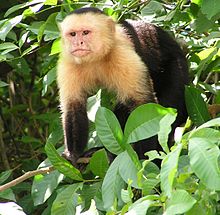 (Beyond Pesticides, September 15, 2020) Both wild and captive primates are being exposed to hazardous pesticides and flame retardants, according to research published this month in the journal
(Beyond Pesticides, September 15, 2020) Both wild and captive primates are being exposed to hazardous pesticides and flame retardants, according to research published this month in the journal  (Beyond Pesticides, September 14, 2020) As Congress returns to Washington this week, it is overdue to pass critical pandemic aid for families and communities, including helping small and mid-scale farms and ranches, farmers markets, and local food businesses address the impacts of the Covid-19 pandemic.
(Beyond Pesticides, September 14, 2020) As Congress returns to Washington this week, it is overdue to pass critical pandemic aid for families and communities, including helping small and mid-scale farms and ranches, farmers markets, and local food businesses address the impacts of the Covid-19 pandemic. (Beyond Pesticides, September 11, 2020) In late August, the
(Beyond Pesticides, September 11, 2020) In late August, the 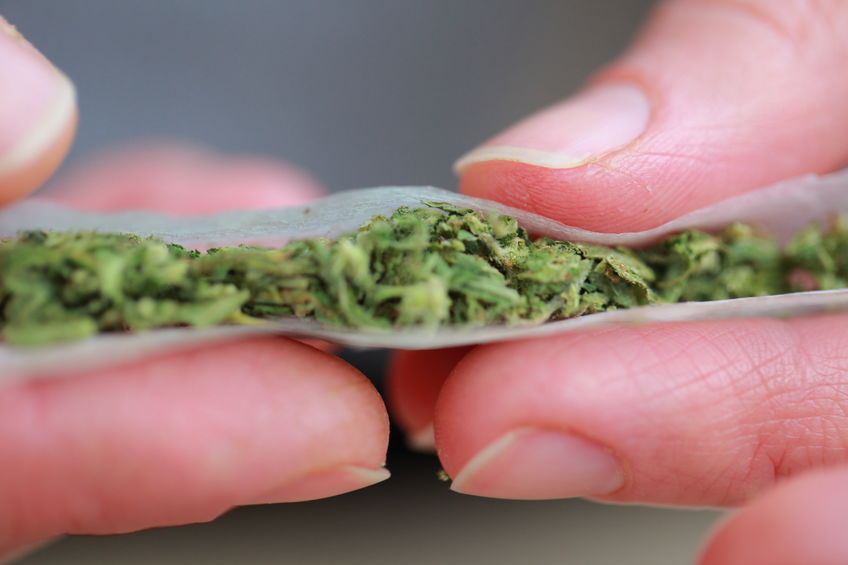 (Beyond Pesticides, September 10, 2020) AÂ
(Beyond Pesticides, September 10, 2020) AÂ  (Beyond Pesticides, September 9, 2020) Late last month the California legislature voted to ban, with limited exceptions, the use of highly toxic rat poisons. The California Ecosystems Protection Act of 2020,
(Beyond Pesticides, September 9, 2020) Late last month the California legislature voted to ban, with limited exceptions, the use of highly toxic rat poisons. The California Ecosystems Protection Act of 2020,  (Beyond Pesticides, September 8, 2020) Canada should be in accordance with international treaty to eliminate persistent pollutants.Â
(Beyond Pesticides, September 8, 2020) Canada should be in accordance with international treaty to eliminate persistent pollutants. 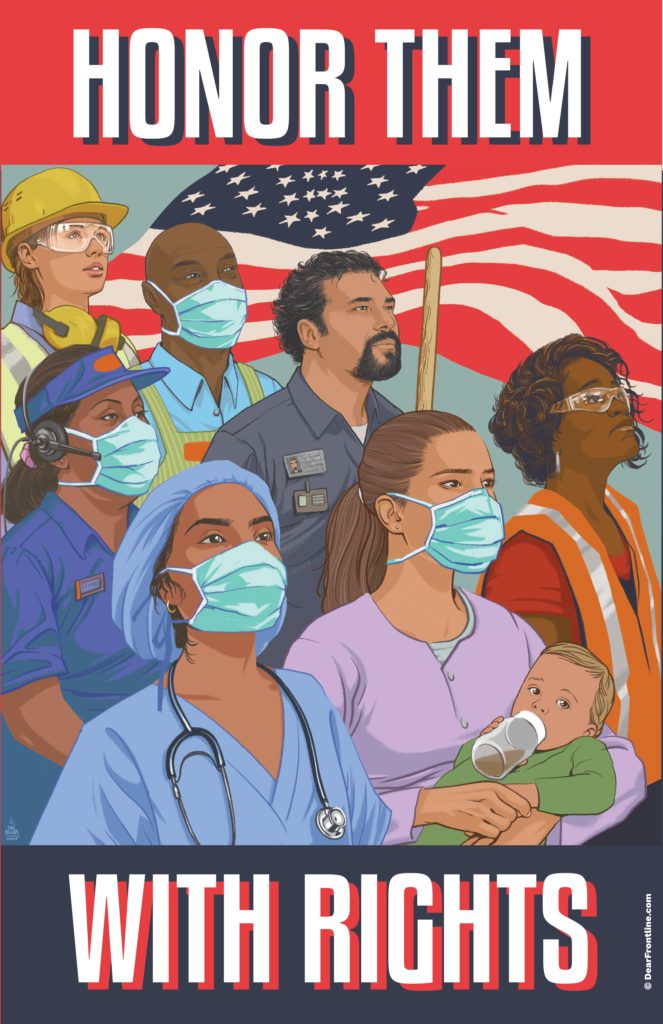 (Beyond Pesticides, September 7, 2020) On Labor Day during this coronavirus pandemic, it is especially appropriate that we thank all essential workersâbut thanks are not enough. We must redouble our efforts to eliminate the racial and economic inequities in our society that contribute to disproportionate risk to the health and well-being of workers, especially people of color. As the commentary in
(Beyond Pesticides, September 7, 2020)Â On Labor Day during this coronavirus pandemic, it is especially appropriate that we thank all essential workersâbut thanks are not enough. We must redouble our efforts to eliminate the racial and economic inequities in our society that contribute to disproportionate risk to the health and well-being of workers, especially people of color. As the commentary in  (Beyond Pesticides, September 4, 2020)Â When
(Beyond Pesticides, September 4, 2020)Â When  (Beyond Pesticides, September 3, 2020) Occupational exposure to pollutants including, those from wood burning, pesticides, metals, and vehicle combustion, increases the risk of developing heart abnormalities among Latinx individuals, according to new research published in the
(Beyond Pesticides, September 3, 2020) Occupational exposure to pollutants including, those from wood burning, pesticides, metals, and vehicle combustion, increases the risk of developing heart abnormalities among Latinx individuals, according to new research published in the 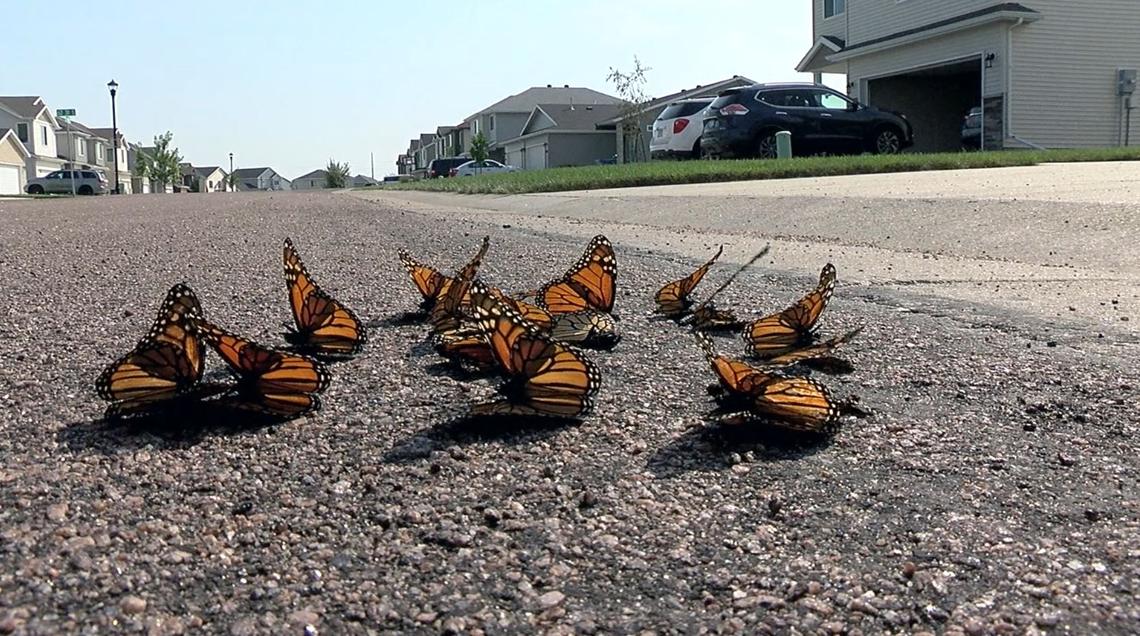 (Beyond Pesticides, September 2, 2020)Â Itâs being called the Monarch Massacreâhundreds of monarch butterflies found dead after the Vector Control Department of Cass County, North Dakota aerially sprayed the county for mosquito control. This incident occurred during a moment in history that is seeing monarchs at the edge of extinction, with the number of monarch butterflies overwintering in Mexico having declined 53% from last year, according to a count conducted byÂ
(Beyond Pesticides, September 2, 2020) Itâs being called the Monarch Massacreâhundreds of monarch butterflies found dead after the Vector Control Department of Cass County, North Dakota aerially sprayed the county for mosquito control. This incident occurred during a moment in history that is seeing monarchs at the edge of extinction, with the number of monarch butterflies overwintering in Mexico having declined 53% from last year, according to a count conducted by 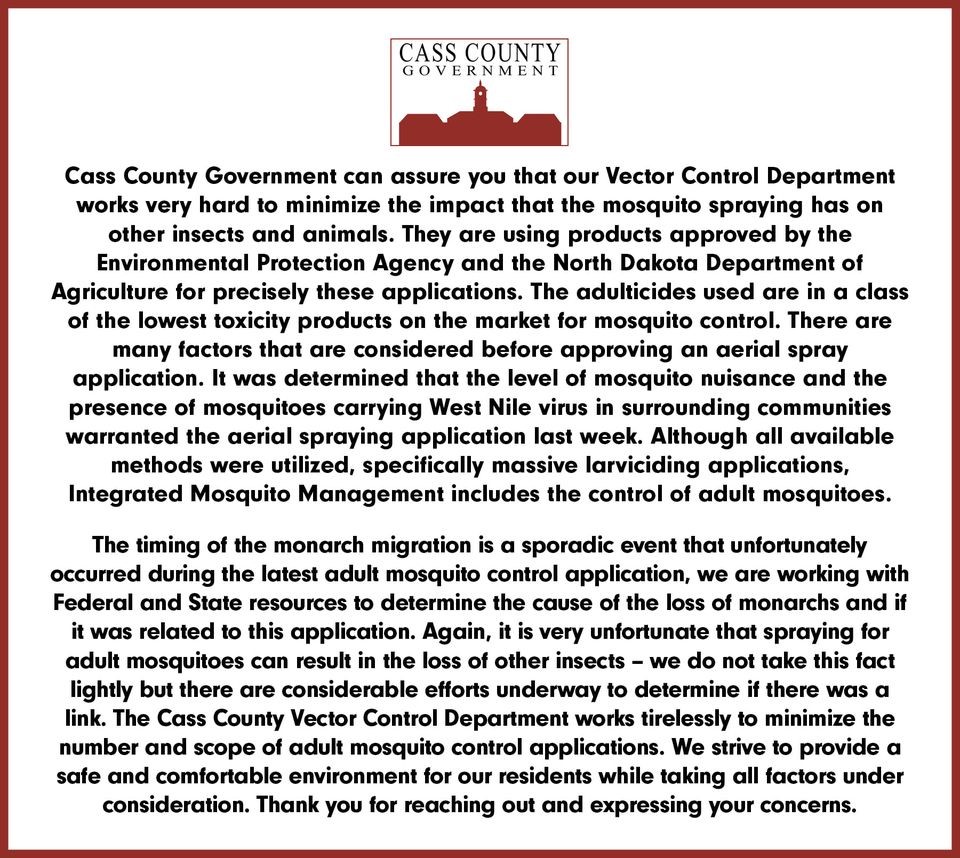
 (Beyond Pesticides, September 1, 2020)Â In its new report, industry watchdog OrganicEye, a project of Beyond Pesticides, examines the rapidly expanding CBD market, uncovering numerous examples of gross violations flying under the radar. In its report,
(Beyond Pesticides, September 1, 2020)Â In its new report, industry watchdog OrganicEye, a project of Beyond Pesticides, examines the rapidly expanding CBD market, uncovering numerous examples of gross violations flying under the radar. In its report, 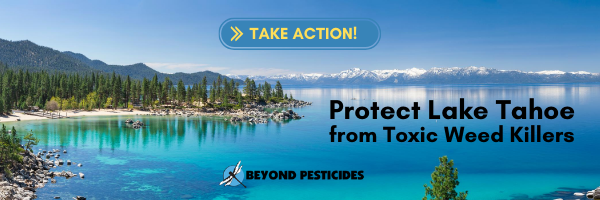 (Beyond Pesticides, August 31, 2020) We don’t need to use toxic weed killers to manage unwanted vegetation in Lake Tahoe, given the havoc they will wreak on a treasured and sacred ecosystem. The Tahoe Regional Planning Agency and Lahontan Regional Water Quality Control Board (TRPA/LRWQCB) are accepting comments on a draft environmental impact report/ environmental impact statement (EIR/EIS) analyzing environmental impacts of a proposed Tahoe Keys Lagoons Aquatic Weed Control Methods Test (âProjectâ). Unless we all speak up, the Project could involve the application of herbicides to Lake Tahoe. The Action Alternative 1: Testing of Non-Herbicidal Methods Only is the environmentally best choice and should be selected for the proposed weed control test program.
(Beyond Pesticides, August 31, 2020) We don’t need to use toxic weed killers to manage unwanted vegetation in Lake Tahoe, given the havoc they will wreak on a treasured and sacred ecosystem. The Tahoe Regional Planning Agency and Lahontan Regional Water Quality Control Board (TRPA/LRWQCB) are accepting comments on a draft environmental impact report/ environmental impact statement (EIR/EIS) analyzing environmental impacts of a proposed Tahoe Keys Lagoons Aquatic Weed Control Methods Test (âProjectâ). Unless we all speak up, the Project could involve the application of herbicides to Lake Tahoe. The Action Alternative 1: Testing of Non-Herbicidal Methods Only is the environmentally best choice and should be selected for the proposed weed control test program. (Beyond Pesticides, August 28, 2020)Â The
(Beyond Pesticides, August 28, 2020)Â The 
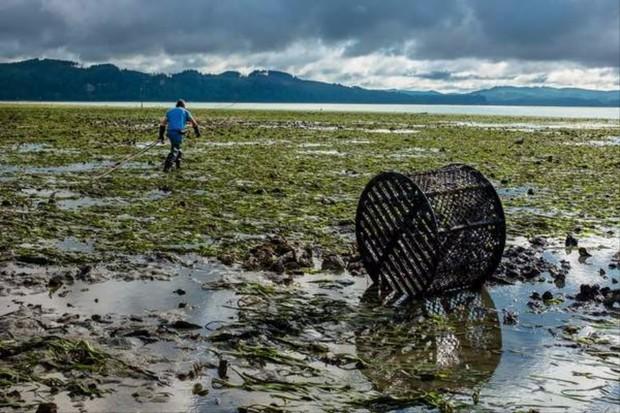 (Beyond Pesticides, August 26, 2020) Neonicotinoid insecticides damage the health of shrimp and oysters, according to two (
(Beyond Pesticides, August 26, 2020) Neonicotinoid insecticides damage the health of shrimp and oysters, according to two ( (Beyond Pesticides, August 25, 2020) The City of Gaithersburg, MD has chosen to opt-in to Montgomery Countyâs
(Beyond Pesticides, August 25, 2020) The City of Gaithersburg, MD has chosen to opt-in to Montgomery Countyâs  (Beyond Pesticides, August 24, 2020) USDA’s Farm Service Agency (FSA)
(Beyond Pesticides, August 24, 2020) USDA’s Farm Service Agency (FSA) 